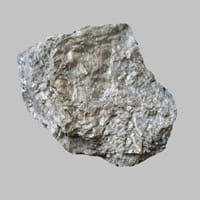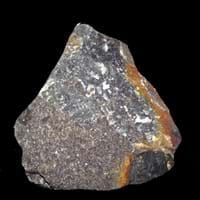Definition
Whiteschist is an uncommon rock type belonging to a class of metamorphic rock, this is formed at high-ultra-high pressures
Dolomite is a sedimentary rock containing more than 50 percent of the mineral dolomite by weight
Origin
Tasmania
Southern Alps, France
Discoverer
Unknown
Dolomieu
Etymology
From French schiste, Greek skhistos i.e. split
From French, from the name of Dolomieu (1750–1801), the French geologist who discovered the rock
Class
Metamorphic Rocks
Sedimentary Rocks
Sub-Class
Durable Rock, Soft Rock
Durable Rock, Medium Hardness Rock
Group
Not Applicable
Not Applicable
Other Categories
Fine Grained Rock, Medium Grained Rock, Opaque Rock
Coarse Grained Rock, Fine Grained Rock, Medium Grained Rock, Opaque Rock
Color
Colourless, Green, Grey, White
Black, Brown, Colourless, Green, Grey, Pink, White
Durability
Durable
Durable
Scratch Resistant
Yes
Yes
Appearance
Banded and Foilated
Glassy or Pearly
Interior Uses
Decorative Aggregates, Interior Decoration
Decorative Aggregates, Homes, Interior Decoration
Exterior Uses
Garden Decoration, Paving Stone
Garden Decoration, Office Buildings
Other Architectural Uses
Curbing
Not Yet Used
Construction Industry
for Road Aggregate
As a Flux in the Production of Steel and Pig Iron, As a Sintering Agent in Steel Industry to process Iron Ore, As Dimension Stone, Cement Manufacture, for Road Aggregate, Making natural cement, Manufacture of Magnesium and Dolomite Refractories, Production of Glass and Ceramics, Serves as an Oil and Gas Reservoir rock
Medical Industry
Not Yet Used
Taken as a Supplement for Calcium or Magnesium
Antiquity Uses
Artifacts, Monuments, Sculpture, Small Figurines
Artifacts, Jewellery, Monuments, Sculpture, Small Figurines
Commercial Uses
Creating Artwork, Gemstone, Jewelry, Production of Lime
An Oil and Gas Reservoir, As a Feed Additive for Livestock, Gemstone, Metallurgical Flux, Production of Lime, Soil Conditioner, Source of Magnesia (MgO)
Types
Not Available
Boninite and Jasperoid
Features
High percentage of mica, Host Rock for Lead
Host Rock for Lead, Traps for subsurface fluids like Oil and Natural Gas., Zinc and Copper Deposits
Archaeological Significance
Famous Monuments
Data Not Available
Data Not Available
Famous Sculptures
Data Not Available
Data Not Available
Formation
Whiteschist is formed by dynamic metamorphism at high temperatures and pressures that aligns the grains of mica, hornblende and other elongated minerals into thin layers.
Dolomite rocks are originally deposited as calcite or aragonite rich limestone, but during diagenesis process, the calcite or aragonite is transformed into dolomite.
Mineral Content
Carbonate, Coesite, Quartz, Silica
Clay Minerals, Pyrite, Quartz, Sulfides
Compound Content
CaO, Mg, MgO, Silicon Dioxide
NaCl, CaO, Carbon Dioxide, Magnesium Carbonate, MgO
Types of Metamorphism
Not Applicable
Burial Metamorphism, Cataclastic Metamorphism, Contact Metamorphism
Types of Weathering
Biological Weathering, Chemical Weathering, Mechanical Weathering
Not Applicable
Types of Erosion
Chemical Erosion, Coastal Erosion, Glacier Erosion
Not Applicable
Grain Size
Fine to Medium Grained
Medium to Fine Coarse Grained
Fracture
Conchoidal
Conchoidal
Porosity
Less Porous
Less Porous
Luster
Subvitreous to Dull
Vitreous and Pearly
Specific Gravity
2.86
2.8-3
Transparency
Opaque
Transparent to Translucent
Density
2.8-2.9 g/cm3
2.8-2.9 g/cm3
Resistance
Heat Resistant
Heat Resistant, Pressure Resistant, Wear Resistant
Deposits in Eastern Continents
Asia
Afghanistan, Bangladesh, Bhutan, China, India, Japan, Kazakhstan, Malaysia, Pakistan, Russia, Thailand, Turkey, Vietnam
China, India
Africa
Egypt, Ethiopia, Morocco, Nigeria, South Africa
Morocco, Namibia
Europe
Austria, England, France, Georgia, Germany, Italy, Liechtenstein, Monaco, Norway, Slovenia, Spain, Sweden, Switzerland
Austria, Italy, Romania, Spain, Switzerland
Others
Not Yet Found
Not Yet Found
Deposits in Western Continents
North America
Canada, Costa Rica, Cuba, Mexico, Panama, USA
Mexico, USA
South America
Brazil, Colombia, Guyana
Brazil, Colombia
Deposits in Oceania Continent
Australia
New South Wales, New Zealand, Queensland
New South Wales, Queensland, Yorke Peninsula
Whiteschist vs Dolomite Characteristics
Though some rocks look identical, they have certain characteristics which distinguish them from others. Characteristics of rocks include texture, appearance, color, fracture, streak, hardness etc. Whiteschist vs Dolomite characteristics assist us to distinguish and recognize rocks. Also you can check about Properties of Whiteschist and Properties of Dolomite. Learn more about Whiteschist vs Dolomite in the next section. The interior uses of Whiteschist include Decorative aggregates and Interior decoration whereas the interior uses of Dolomite include Decorative aggregates, Homes and Interior decoration. Due to some exceptional properties of Whiteschist and Dolomite, they have various applications in construction industry. The uses of Whiteschist in construction industry include For road aggregate and that of Dolomite include As a flux in the production of steel and pig iron, As a sintering agent in steel industry to process iron ore, As dimension stone, Cement manufacture, For road aggregate, Making natural cement, Manufacture of magnesium and dolomite refractories, Production of glass and ceramics, Serves as an oil and gas reservoir rock.
More about Whiteschist and Dolomite
Here you can know more about Whiteschist and Dolomite. The life cycle of a rock consists of formation of rock, composition of rock and transformation of rock. The composition of Whiteschist and Dolomite consists of mineral content and compound content. The mineral content of Whiteschist includes Carbonate, Coesite, Quartz, Silica and mineral content of Dolomite includes Clay Minerals, Pyrite, Quartz, Sulfides. You can also check out the list of all Metamorphic Rocks. When we have to compare Whiteschist vs Dolomite, the texture, color and appearance plays an important role in determining the type of rock. Whiteschist is available in colourless, green, grey, white colors whereas, Dolomite is available in black, brown, colourless, green, grey, pink, white colors. Appearance of Whiteschist is Banded and Foilated and that of Dolomite is Glassy or Pearly. Properties of rock is another aspect for Whiteschist vs Dolomite. The hardness of Whiteschist is 1.5 and that of Dolomite is 3.5-4. The types of Whiteschist are Not Available whereas types of Dolomite are Boninite and Jasperoid. Streak of rock is the color of powder produced when it is dragged across an unweathered surface. The streak of Whiteschist and Dolomite is white. The specific heat capacity of Whiteschist is 0.92 kJ/Kg K and that of Dolomite is 0.92 kJ/Kg K. Depending on the properties like hardness, toughness, specific heat capacity, porosity etc., rocks are resistant to heat, wear, impact, etc.Whiteschist is heat resistant whereas Dolomite is heat resistant, pressure resistant, wear resistant.





